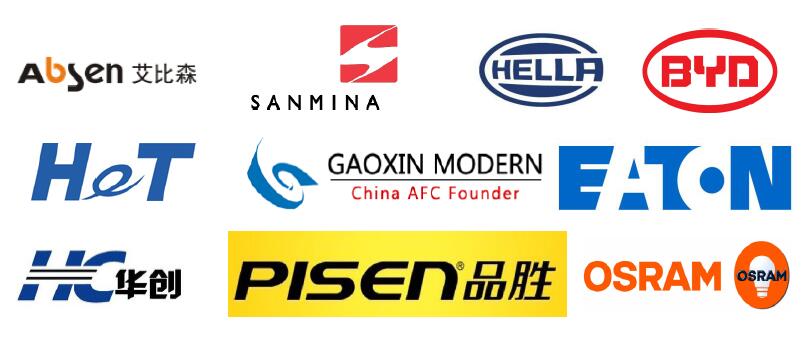

ENIG Immersion Gold 94V0 Printed Circuit Boards HDI Printed Circuit Boards 600 mm x 1200 mm Electronic Printed Circuit Board
ENIG Immersion Gold 94V0 Printed Circuit Boards HDI Printed Circuit
Boards 600 mm x 1200 mm
Detail Specifications:
- Layers: 2 layers
- Material: fr-4
- Copper thickness: 1oz
- Surface Treatment: ENIG immersion gold
- Min drill hole: 0.2mm
- soldmask color: green
- silkscreen color: white
To get a full quotation of the PCB/PCBA, pls provide the
information as below:
|
|
|
What KAZ Circuit can do for you:
- PCB prototype/mass production
- Components sourcing accoring to your BOM list.
- PCB Assembly (SMT/DIP..)
Manufacturer Capacity:
| Capacity | Double Sided: 12000 sq.m / month Multilayers: 8000sq.m / month |
| Min Line Width/Gap | 4/4 mil (1mil=0.0254mm) |
| Board Thickness | 0.3~4.0mm |
| Layers | 1~20 layers |
| Material | FR-4, Aluminum, PI |
| Copper Thickness | 0.5~4oz |
| Material Tg | Tg140~Tg170 |
| Max PCB Size | 600*1200mm |
| Min Hole Size | 0.2mm (+/- 0.025) |
| Surface Treatment | HASL, ENIG, OSP |
Printed circuit boards (PCBs) are the basic components of electronic equipment and are the
physical foundation that connects and supports various electronic
components. It plays a vital role in the functionality and
reliability of electronic systems.
Key aspects of electronic printed circuit boards include:
Layers and composition:
PCBs are typically made up of multiple layers, with the most common
being a 2- or 4-layer design.
These layers are made of copper serving as conductive paths and a
non-conductive substrate such as fiberglass (FR-4) or other
specialty materials.
Other layers may include power and ground planes for power
distribution and noise reduction.
Interconnects and Traces:
The copper layer is etched to form conductive traces that serve as
pathways for electrical signals and power.
Vias are plated-through holes that connect traces between different
layers, enabling multi-layer interconnections.
Trace width, spacing, and routing patterns are designed to optimize
signal integrity, impedance, and overall electrical performance.
Electronic component:
Electronic components, such as integrated circuits, resistors,
capacitors, and connectors, are mounted and soldered to the PCB.
The placement and routing of these components is critical to
ensuring optimal performance, cooling, and overall system
functionality.
PCB manufacturing technology:
PCB manufacturing processes typically involve steps such as
lamination, drilling, copper plating, etching and solder mask
application.
Advanced technologies such as laser drilling, advanced plating, and
multi-layer co-lamination are used in specialized PCB designs.
PCB Assembly & Soldering:
Electronic components are placed and soldered onto the PCB either
manually or automatically using techniques such as through-hole
soldering or surface mount soldering.
Reflow soldering and wave soldering are common automated processes
for connecting components.
Testing & Quality Control:
The PCB undergoes various testing and inspection processes such as
visual inspection, electrical testing, and functional testing to
ensure its reliability and performance.
Quality control measures, such as in-process inspections and
design-for-manufacturability (DFM) practices, help maintain high
standards in PCB production.
Electronic PCBs are used in a wide variety of applications, including consumer
electronics, industrial equipment, automotive systems, medical
devices, aerospace and telecommunications equipment, and more.
Continuing advances in PCB technology, such as the development of
high-density interconnect (HDI) PCBs and flexible PCBs, have
enabled the creation of smaller, more powerful, and more
energy-efficient electronic devices.
More photoes of 2 layers FR4 1.0mm 1oz Immersion Gold printed
circuit board PCB



ShenZhen KaiZhuo Electronic Technology Co.,Ltd
In the year of 2024, SHENZHEN KAIZUO ELECTRONIC TECHNOLOGY CO., LTD (KAZ CIRCUIT) has joined Kingsum group (www.kingsumpcba.com), to seek for a larger market share from PCB manufacturing, component sourcing, pcb assembly, and box build assembly with better price and lead time.
Founded in 2007, KaiZuo Electronic (hereinafter referred to as KAZ) is a professional & high quality provider of Electronic Manufacturer Service (EMS) from China. With about 300 experienced employees, KAZ can provide customers with one stop services including PCB manufacturing, Components Sourcing, PCB Assembly, Cable Assembly, Box Building, IC Programming, Functional and Aging Testing. Certified with ISO9001, UL, RoHS, TS16949.
Equipped with 5 high-speed SMT, automatic printing machine (DSP1008), MIRAE MX200/MIRAE MX400 high-speed production line, YAMAHA equipment (YS24/YG12F...), reflow soldering (NS-1000), AOI testing equipment (JTA-320-M), X-Ray inspection equipment (Nikon AX7200), 2 DIP production lines and Nitto wave soldering.
After focusing on the electronic manufacturer services for 13+ years, KAZ has established long-term cooperated & satisfied customers all over the world. Mainly from North America, European, Asia and Australia. Application fields including industrial control, IT/Networking, IoT, security, automotive, power electronics, consumer electronics, lighting, etc.
Some of KAZ Customers:

Certificates including:
- ISO9001
- TS16949
- UL
- RoHS




